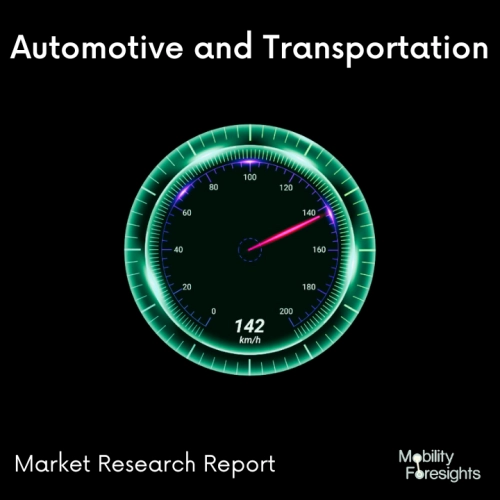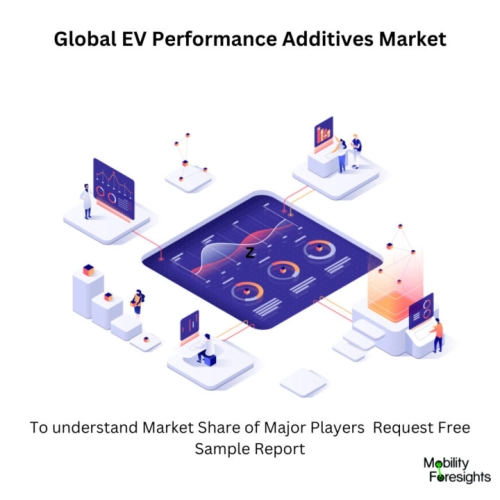
- Get in Touch with Us

Last Updated: Apr 25, 2025 | Study Period: 2023-2030
The performance additives of EVs contain a number of electric power components: the Electric Power Control Unit (EPCU), the battery, the on-board charger, and the motor All of them are necessary for converting the electricity in the battery into the kinetic force that propels the electric vehicle forward.
An Internal Combustion (IC) automobile faces a completely different challenge when it comes to the thermal management of EV Performance Additives.
EV batteries, in contrast to conventional IC engines, which only require a cooling circuit to lower the engine's temperature, must be controlled within a specific temperature range in order for the cells to function at their full potential.
A battery's capacity to store and conserve energy increases with its efficiency; extending the vehicle's range of travel. A battery instead of a gasoline tank and an electric motor instead of an internal combustion engine are features of electric vehicles (EVs).
A battery, an electric motor, a gasoline tank, and an internal combustion engine make up plug-in hybrid electric vehicles (PHEVs), which combine gasoline and electric vehicles.

The EV Performance Additives accounted for $XX Billion in 2022 and is anticipated to reach $XX Billion by 2030, registering a CAGR of XX% from 2023 to 2030.
HiTEC 35701, the world's first EV performance additive designed for direct-cooled electric motors with multi-speed systems, has been added to Afton Chemical's eMobilty additive line.
This product is truly novel and provides key platform technology for battery electric vehicles. It has been rolled out early to OEM and oil marketer customers until 2020.
The importance of designing a fluid specifically for the application increases with the number of demands placed on a single lubricant. Direct cooling concepts are becoming increasingly popular as the electric vehicle market develops.
Direct cooling and multi-speed transmissions are on the rise, according to current trends. As a result, a product that can accommodate a variety of hardware architectures and is fully future-proof is needed.
The HiTEC 35701 ETF additive is intended for use in electric vehicle drives in passenger cars and commercial vehicles and is compatible with all eAxles, including wet multi-speed.
As a result, it is the first complete eAxle additive on the market, catering to OEMs' hardware requirements in a single product.
Engineers can add a shifting device for multi-speed because it strikes a balance between the electric motor's requirements and friction performance.Traditional transmission fluids are unable to meet the demands imposed by the electric motor and axle systems.
It improves core performance in gear and bearing protection while also meeting new requirements with excellent electrical properties before and after ageing, strong copper protection in liquid and vapour phase, and good oxidation prevention.The HiTEC 35701 ETF additive has carefully balanced performance, making it ready for the future.
| Sl no | Topic |
| 1 | Market Segmentation |
| 2 | Scope of the report |
| 3 | Abbreviations |
| 4 | Research Methodology |
| 5 | Executive Summary |
| 6 | Introduction |
| 7 | Insights from Industry stakeholders |
| 8 | Cost breakdown of Product by sub-components and average profit margin |
| 9 | Disruptive innovation in the Industry |
| 10 | Technology trends in the Industry |
| 11 | Consumer trends in the industry |
| 12 | Recent Production Milestones |
| 13 | Component Manufacturing in US, EU and China |
| 14 | COVID-19 impact on overall market |
| 15 | COVID-19 impact on Production of components |
| 16 | COVID-19 impact on Point of sale |
| 17 | Market Segmentation, Dynamics and Forecast by Geography, 2023-2030 |
| 18 | Market Segmentation, Dynamics and Forecast by Product Type, 2023-2030 |
| 19 | Market Segmentation, Dynamics and Forecast by Application, 2023-2030 |
| 20 | Market Segmentation, Dynamics and Forecast by End use, 2023-2030 |
| 21 | Product installation rate by OEM, 2023 |
| 22 | Incline/Decline in Average B-2-B selling price in past 5 years |
| 23 | Competition from substitute products |
| 24 | Gross margin and average profitability of suppliers |
| 25 | New product development in past 12 months |
| 26 | M&A in past 12 months |
| 27 | Growth strategy of leading players |
| 28 | Market share of vendors, 2023 |
| 29 | Company Profiles |
| 30 | Unmet needs and opportunity for new suppliers |
| 31 | Conclusion |
| 32 | Appendix |